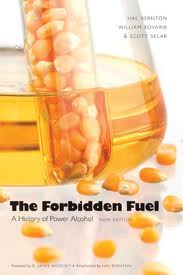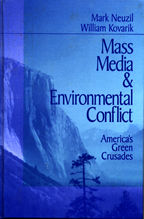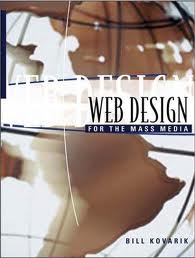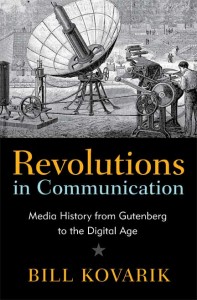
This is one of those AI photo conversions using the Studio Ghibli style. We were talking about the copyright issues in media law class, so I decided to try it.
William (Bill) Kovarik, PhD, is an historian and a professor at Radford University. His research involves science, technology and communications, and his professional background involves reporting and editing for daily newspapers, national news magazines, wire services and environmental publications. In 2021 he was named among the leading pioneers of environmental journalism by Environmental Health News.
Education: Kovarik earned a Bachelor of Science in Journalism at VCU in Richmond, Virginia; an MA in communication at the University of South Carolina; and a PhD in communication at the University of Maryland. His research is located at the intersections of media history, media technology, science communication and international development. His dissertation involved research into the media coverage of a preventable environmental disaster (Ethyl leaded gasoline) and the use of media history to uncover previously inaccessible and unknown events in environmental history. Kovarik also studied international comparative media law as a post-doctoral fellow at the Oxford PCMLP Summer Institute.
Media career: Kovarik worked with wire services, daily newspapers, national news magazines and the environmental press. These included the Associated Press, the Baltimore Sun, the Charleston SC Post-Courier, columnist Jack Anderson, the New York Times, Time Magazine and Time-Life Books, among other mainstream media organizations. He began his career as editor and publisher of the Chesterfield News Journal, a weekly newspaper. He has also served as editor of Energy Resources and Technology, Latin American Energy Report, Appropriate Technology, New River Voice and Appalachian Voice.
Professional service: Kovarik was elected as an academic representative on the board of directors of the Society of Environmental Journalists and also served on the board of Appalachian Voices and the academic advisory board for the Virginia Center for Investigative Journalism and the Virginia Press Association FOIA task force. He is the faculty advisor for the Tartan newspaper and other student publications. He has also served as a consultant to the Virginia Mountaineer (Grundy, Va) and Floyd (Va) Community Media. He is also a contributing historian on a United Nations Foundation expert panel.
University and teaching service: Kovarik has served for more than three decades as a professor at Radford University — a public university that was once part of Virginia Tech. He has also served as an instructor at the University of Maryland and the University of South Carolina; as a visiting professor at Virginia Tech, the University of Western Ontario in London, and the University of Ljubljana in Slovenia; and as a professor at Unity College in Maine; and an instructor in media history for Springhouse School and the Virginia Governor’s School for the Humanities. He is also a regular instructor at the annual Roanoke Regional Writers Conference at Hollins University. Kovarik also served as a writing coach and ethics instructor at Virginia Tech in the Dept. of Chemical Engineering and the Bioinformatics Institute.
Books & Publications: “The Forbidden Fuel” (1982, republished 2010) with Hal Bernton and Scott Sklar), The Ethyl Controversy (1993); “Mass Media and Environmental Conflict” (1996, with Mark Neuzil, Sage); “Web Design for the Mass Media” (2001, Pearson) and “Revolutions in Communication” (2011, 2016, Bloomsbury, with a 3rd edition published in 2025).
Media and Environmental Law: Prof. Kovarik has provided expert testimony in lawsuits involving environmental history issues for Peter Angelos LLC and for Lloyds of London, and in lawsuits involving defamation and freedom of information issues in Virginia and West Virginia.
Kudos for environmental history:
“I’d like to personally thank Prof Bill Kovarik, who is also a subscriber, for his work on this subject. He and a small band of like-minded individuals have produced the vast majority of authoritative scientific accounts, data, and research on Leaded Petrol exposure, and have been on a lonely mission to inform the world of the damage that has been done to so many by the greed of so few…” Nicholas Kircher, A Chemical Mind podcast. April 9, 2025.
“My research stands on the shoulders of prior scholars who have devoted their careers to the subjects in this book. I could not have written this without Bill Kovarik, with his encyclopedic recall of Ethyl history …” Daniel Stone, American Poison, Penguin Random House, February 2025.
When it came time to make the attempt to capture in words the horror that was producing tetra-ethyl lead in the 1920s, I turned to Bill Kovarik, PhD. Dr. Kovarik is professor in the School of Communication at Radford University. He is also today’s finest authority on the dark history of leaded gasoline and the still-present global environmental disaster it brought about… We thank Bill for graciously allowing us to work into our story his detailed description of the tetra-ethyl lead manufacturing process as it existed in the 1920s. That process, carried out by workers who were kept in the dark about its risks as long as possible, is downright terrifying. Thanks, Bill, for the specifics and the accuracy. — Swirled all the way to the shrub by Rick Wilson and Tom Bentley.
Plaudits for Revolutions in Communication: Media history from Gutenberg to the Digital Age:
“A stunning work of research, [Revolutions in Communication] conveys intellectual excitement and stimulates creative thinking about the social construction of communication.” ―Maurine H. Beasley, Professor Emerita of Journalism, Philip Merrill College of Journalism, University of Maryland College Park, USA
“I could almost imagine myself standing next to William Caxton as the newly inked printed pages of the Canterbury Tales began to accumulate on the table next to his printing machine. Bill Kovarik’s latest work on the history of the media has brought together under one academic roof the role of technology and how it has shaped our way of life and our world. He deserves full credit for the way his words take on both colour and a sense of adventure. This work belongs on the book shelves of any university or college program in which the study of technology and its companion media has a central focus. Let it be said that Kovarik’s readers will never suffer a dull moment in this beautifully tailored work as he walks through some of the most important history of the age from the iPad to the cell phone to the Internet.” ―David R. Spencer, Professor of Information and Media Studies, University of Western Ontario, Canada
“Kovarik has the most complete understanding of media technology among journalism historians working today. It is a very interesting and useful work.” ―Mark Neuzil, Professor of Communication and Journalism, University of St. Thomas
“As an historian of both technology and the media, Bill Kovarik has made a unique contribution to our understanding of communication history. He explains how the print, visual, electronic, and digital technological revolutions have shaped communication. Equally important, he shows that that new technologies have been invented to overcome the limitations of existing media. This is fascinating reading, both for communication scholars and historians.” ―James E. Grunig, Professor Emeritus of Communication, University of Maryland, USA
“A clear benefit of the second edition Revolutions in Communication is its focus on recent technological revolutions in media. As I tell my undergraduate media history students on the first day, the one constant in professional journalism and related fields is technological change. Seeing how people in the past have dealt with change, as outlined in Kovarik’s book, offers a way of keeping history relevant while grappling with shifts in media technologies.” ―Jane Marcellus, Professor of Journalism, Middle Tennessee State University, USA
“A solid and very accessible textbook. The first edition of Revolutions in Communication does an excellent job in introducing a wide range of topics, and while the second edition maintains that, it further introduces a level of international orientation that is extremely important and welcome.” ―Glenn Ruhl, Professor in Communication Studies, Mount Royal University, Canada
“This text offers a very good and useful survey of communications systems and developments that underpins the importance of understanding the historical context.” ―Sheryl Wilson, University of the West of England, UK.
“Revolutions in Communication does what few introductory media textbooks can-it captures and engages the attention of undergraduate students through savvy exploration of the major milestones in media history and the dramatic curves in the road that some navigated, and others neglected. It is the story of circumventing technologies bypassing legal and institutional barriers and information monopolies to bring media content to mass audiences for the first time at signal moments in human history. The creativity and ingenuity of technological discovery appear alongside media’s darker uses by monopolists and propagandists. All are meticulously set in their industrial and legal contexts, often roiling with contention sparking social and political transformation-from the Protestant Reformation to the digital revolution-that would forever change the world.” ―David Dowling, Professor, School of Journalism and Mass Communication, University of Iowa, USA
“Kovarik’s book has become a staple of media history courses across the world since its first edition. This third edition goes even further and deeper in its research scope with a comparative historical approach and with rich updated examples on all types of media technology. A must read for the public and students of all ages alike.” ―Murat Akser, Senior Lecturer in Screen Production, Ulster University, UK
“The publication briefly and clearly, yet insightfully describes the development of communication and media history from antiquity to the current present, from the first drawings in caves and the birth of the first written systems to the world of social networks today. The book presents a readable text explaining the turning points on this journey in a way that allows them to be understood even by those who have been distant from communication and media history. Therein lies the main prize of this book.” ―Pavel Vecera, Assistant Professor, Masaryk University, Czech Republic
prof. Kovarik’s books & projects
Publications & Public service
- Chair, symposium on leaded gasoline, Environmental History, May 20, 2025.
- Publisher’s review, Black Gold by Robert Wyss, University of California Press, Feb. 2025.
- “Writing ghost stories,” seminar leader, Roanoke Writers Conference, Hollins University, Jan. 2025.
- Remembering Peter Dykstra, Environmental History Timeline, August 2024. Also “Living on Earth” radio commentary Sept. 20, 2024.
- “Environmental conflict as a centuries-old debate: Ben Franklin’s Dock Creek,” Society of Environmental Journalists, Philadelphia, PA, April 4, 2024.
- “Inventor, Publisher, Celebrity, Diplomat. Environmentalist? Inside Ben Franklin’s Battle Over Philadelphia Pollution,” interview with Kyle Bagenstose, Green Philly, June 6, 2024.
- “Sports Illustrated has been sidelined,” Radford University, Jan 22, 2024.
- “Teddy bears and mind bombs: Historiography of science and environmental news,” AEJMC, August 9, 2023.
- Wayzgoose Welcome, Sourced Press, Oct. 7, 2023.
- How monopolies built the telegraph — NAS panel, July 6, 2023.
- Virginia Governor’s School classes, summer 2023 — Hands on Media History and Digital media & communications law.
- “Journalism is not espionage” — Article for The Conversation, Neiman Reports, and others. April, 2023.
- Newspaper Rebirth? — Roanoker Magazine, March, 2023, following this interview on the future of newspapers November 2022.
- “Palin’s appeal could set up a test case of decades-old media freedom rule,” Nieman Lab, Feb. 17, 2022.
- Leaded gasoline and the media: Interview with WYSO Dayton Ohio, Jan. 18, 2022.
- A century of tragedy: How the car and gas industry knew about the risks of leaded gasoline fuel but sold it for 100 years anyway,” The Conversation, Dec. 8, 2021.
- “How a silent movie informs the current debate over the right to be forgotten,” The Conversation, March 10, 2021.
- “That time private US media companies stepped in to silence the falsehoods and incitements of a major public figure … in 1938,” The Conversation, Jan. 15, 2021, republished in over 5,000 publications.
- “Changing views of extinction in history,” in Communicating Endangered Species: Extinction, News and Public Policy, Eds. David B. Sachsman, Eric Freedman, Sarah Shipley Hiles, Taylor & Francis, 2021.
- National Clean Fuels Technology and Health Effects Leadership Symposium, Feb. 7, 2020, United Nations Foundation, Washington DC.
- “International Environmental Journalism,” chapter in Routlege Handbook of Environmental Journalism, Eds. David B. Sachsman, and JoAnn Myer Valenti, 2019.
- Book review, Race News, by Fred Carroll, University of Illinois Press, 2017, for American Journalism, summer 2018.
- Publisher’s review, Covering the Environment: How Journalists Work the Green Beat, Second Edition, by Robert L. Wyss, Routledge, 2018.
- “Exploring the historiography of science and environmental journalism,” March, 2017, Joint Journalism and Communication History Conference, New York University.
- “History of Environmental Journalism,” lecture, School of Journalism, and a second lecture, “Understanding Environmental History,” School of Marine Science, Stony Brook University, both Feb. 6, 2017.
- “American newspapers” in Rycroft, R., ed, The American Middle Class, ABC-CLIO, 2o17.
- “A new business model for the media,” Feature section, second edition, Revolutions in Communication, summer, 2016.
- “The original fuel of the future,” presentation and poster for Growth Energy conference, Orlando, Fla., February, 2016.
- “DDT Wars” book review, SEJournal, Dec. 2015.
- “Revolutions in Communication” second edition of the Bloomsbury book, published November 2015.
- “The Great Texas Wind Rush,” book review, SEJournal, June, 2015.
- “Exploring the history of sustainable energy,” poster presentation, Unity College, May 2015.
- Chesapeake Climate Action Network, Safe Coast report, May 2014 (short release) and full pdf report here. A related report was written for Daily Climate.
- Daily Climate and other publications – The Whale oil Myth, March, 2014; Virginia mayors say its time to respond to climate change, Sept. 2013; A green Nixon doesn’t wash, January 2013; Earth Hour Fades at US Border March, 2012
- “Appalachia’s Contested History,” Appalachian Voice, Oct. 2013. “Podcasting Appalachia’s History,” Appalachian Voice, Oct. 2013. And other Appalachian Voice articles dating back to 2005.
- Communication and Peace – for RU Peace Studies classes, April, 2012
- Collaboration on Global Witness report on environmental murders Also see Environmental History Timeline page, Oct. 2012
- Earth Island Institute, Yes Magazine – Larry Gibson, a voice of the mountains Oct. 2012
- Contributor to European Environment Agency’s “Late Lessons, Early Warnings” report, Jan. 23, 2013. See especially: Part A – Lessons from health hazards Also see 2013 video.
- Teaching science and environment writing (for the SEJ), January 2013
- History of Environmental Journalism (slideshare) Part 1: before Earth Day, March 2013.
- Earth Island Journal articles, 2009 – 2012
- “Radio and the Titanic: Media controversy and the development of broadcast law, on the 100th anniversary of the disaster,” paper to AEJMC Southeast Colloquium, March 2012, Virginia Tech.
- “New approach to media history textbooks,” American Journalism Historians Association conference, New York University, March 2011.
- Changing of the grid, Appalachian Voice, 2011
- “Switch grass and cellulosic biofuels,” Appalachian Voice, 2011
- What comes after ethanol? — Roanoke Times, Sept. 4, 2011 — Some people say that government shouldn’t be in the business of choosing technologies. But… We need to remember our history … before taking thoughtless actions we may later come to regret.
- “Characterizing and curating the Deja Vu database,” Virginia Bioinformatics Institute, seminar Aug. 9, 2010. “Environmental Racism and Environmental Reporting: the Appalachian perspective,” discussion paper, Association for Education in Journalism and Mass Communications (AEJMC), Aug. 8, 2010.
- Book Review: Environment and the Press, by Mark Neuzil, for SEJournal, Spring 2010.
- Why do we still have mining disasters, New York Times, 2010
- “Kennedy and Blankenship, head to head,” Daily Kos, Jan. 22, 2010.
- “Chasing Copenhagen,” Appalachian Voice, 2009
- “Historic moment for second-generation biofuels,” SEJournal, 2009
Major research projects
Media history research
- “International Environmental Journalism,” (noted above)
- “Civil rights and the press,” web feature for Revolutions in Communication, 3rd edition under development for Bloomsbury.
- “Life in the old print shop,” feature section from Revolutions in Communication, 2017. Subject of guest lectures via skype at NYU, Ball State and other history classes using Revolutions in Communication as a textbook.
- “The Industrial printing revolution,” feature section from Revolutions in Communication, 2015.
- “E.W. Scripps and science: The unconventional ideas behind the founding of the science service and the Scripps Institute of Oceanography,” feature section from Revolutions in Communication, 2015.
- “Street Press of the Velvet Revolution,” feature section from Revolutions in Communication, 2016.
- The confluence of newspapers and the environment in the early 20th century. Looking at the news coverage of selected public health and conservation issues in the 1899 – 1932 period, we see a striking bipolar distribution, indicating a revival of Progressive era concerns late in the 1920s and the ubiquity of environmental controversy. This is a paper from the 1998 conference of the Association for Education in Journalism and Mass Communications.
- Exploring the Lost History of Environmental Conflict Before Silent Spring. Presentation to the Communication Studies Seminar Series Virginia Tech September 25, 1998.
- Environmental History Timeline helps remind us of the traditions of reform and the roots of conservation. This was originally a guide for our use when Mark Neuzil and I wrote Mass Media and Environmental Conflict in 1996. Since then it has taken on a life of its own on the web.
- The editor who tried to stop the Civil War: Hezekiah Niles and the New South describes the efforts of one Baltimore editor to reconcile opposing views in the 1820 – 1833 period. He clearly foresaw civil war and proposed a course of economic development for the South which was, perhaps not surprisingly, adopted after the war by Southern progressives, including Atlanta editor Henry Grady. The paper was published in American Journalism in 1992 and has been slightly updated since then.
- Niles Weekly Register Encyclopedia of Journalism History, 2006 — Niles’ concept of news embraced the broadest scope of human experience. His Register kept close track of economics, technology, science, medicine, geography, archaeology, the weather, and many stories of human interest. There was, for example, a dog who rescued another dog from a river. There was the case of a blind woman restored to sight, and another of a slave who killed himself rather than be sold at the slave market. Niles printed many items about ballooning and predicted that someday man would build machines to fly (although he doubted that steam engines could propel them).
-
Greenpeace Entry in the Encyclopedia of Science and Technology Communication, 2009 — Greenpeace raised street theater and protest tactics to a new level using global media. The effect, according to Greenpeace co-founder Robert Hunter, was a “mind bomb” – that is, an action that would create a dramatic new impression to replace an old cliché. The most obvious example of a “mind bomb” was to overturn the image of heroic whalers to that of heroic ecologists risking their lives to save the gentle giants of the sea. This approach caught the world’s attention and dramatically changed the political terrain for commercial fishing and whaling operations after Greenpeace’s first whaling protests in June of 1975.
- Environmental Sourcebook, Center for Foreign Journalists, Scientists Institute for Public Information, Society of Environmental Journalists, 1992-94
- The Ethyl Controversy, Ph.D. Dissertation, University of, 1993. (pdf) After 17 refinery workers went barking mad from lead poisoning, public health officials demanded answers from Standard Oil and General Motors. They claimed there were no alternatives, although they had patented several doz
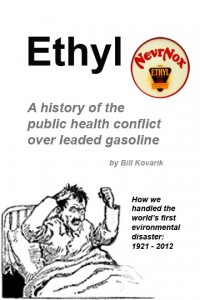 en. Two scientists — Alice Hamilton of Harvard and Yendell Henderson of Yale — stood up to the industry, demanding that the government take precautions, but they were unable to keep the profitable poison off the market. (It was finally banned in the US in the late 1970s). Although industry blamed the media for highly sensational accounts of the disaster, a closer look shows that science writers of the 1920s were able to perform their basic responsibility under democratic theory, which was to uncover facts and present a variety of opinions. What they were not able to do was fathom the technological complexities at the base of the controversy.
en. Two scientists — Alice Hamilton of Harvard and Yendell Henderson of Yale — stood up to the industry, demanding that the government take precautions, but they were unable to keep the profitable poison off the market. (It was finally banned in the US in the late 1970s). Although industry blamed the media for highly sensational accounts of the disaster, a closer look shows that science writers of the 1920s were able to perform their basic responsibility under democratic theory, which was to uncover facts and present a variety of opinions. What they were not able to do was fathom the technological complexities at the base of the controversy. - A Survey of Central American News Media Hardware, Intercommunication and Development needs: Paper presented to the Eighth Annual Conference on Intercultural and International Communication, Miami, Fla. Feb. 22, 1991. These are the results of a study by the International Center for Foreign Journalists concerning media technology needs in Central America.
- Dr North and the Kansas City Milk War: Public Health Advocacy Collides with Main Street Respectability, Paper to The Association for Education in Journalism and Mass Communications (AEJMC) 1989. This is about a New York physician and public health expert who used yellow journalism tactics to force pasteurization on the milk industry of Kansas city in the 1920s.
ENVIRONMENTAL HISTORY Research
 Environmental history timeline began as a structural outline for Mass Media and Environmental Conflict but took on a life of its own when placed on the web in the 1990s. By 2018, the timeline was landing about 1,000 to 2,000 hits per day.
Environmental history timeline began as a structural outline for Mass Media and Environmental Conflict but took on a life of its own when placed on the web in the 1990s. By 2018, the timeline was landing about 1,000 to 2,000 hits per day.- Ongoing support for environmental historians working to understand leaded gasoline and the history of technology. See for example “Historical Ethyl“
- European Environment Agency’s “Late Lessons, Early Warnings” report, Jan. 23, 2013. See especially: Part A – Lessons from health hazards, with article by Prof. K.
- A History of Biofuels Research, Center for Agricultural Bioscience International, May 2013
- Biofuels in History, for World Cafe at Concordia University Montreal, Nov. 20, 2010 and Missouri School of Journalism, Food, Fuel and Society conference, Oct. 12, 2010.
- The science behind second-generation biofuels, SEJournal, July 2009.
- Biofuels: History and public debate,(Slide show) University of Maryland School of Public Policy, April 11, 2008
- Back to the Fuel of the Future, Life Sciences Symposium, University of Missouri, March, 2007.
- Looking South:The world ethanol industry is booming – thanks to the Brazilian example, Com Ciência Ambiental (Sao Paulo, Brazil), winter 2007.
- Special Motives: Automotive Inventors and Alternative Fuels in the 1920s Paper to the Society for the History of Technology, Oct. 19, 2007
- Ethanol’s first century: Blending programs in Europe, Asia, Africa and Latin America, paper to the 30th International Symposium on Alcohol Fuel, Rio de Janeiro, Brazil, November 2006.
- Leaded Gasoline: Trading IQ for Octane, Danmarks radio (Producer), Express TV Produktion (Firm) (Producer), Films for the Humanities & Sciences (Firm) 2005.
- The oil reserve fallacy, 2002 – An paper describing problems with the way world oil reserve estimates are made public. For background, see Information politics and oil wars.
- ETHYL The 1920s Environmental Conflict Over Leaded Gasoline and Alternative Fuels, Paper to the American Society for Environmental History Annual Conference March 26-30, 2003 Providence, R.I.

- Ethyl leaded gasoline: How a classic occupational disease became an international public health disaster, International Journal of Occupational and Environmental Health, October 2005. (Based on 2003 ASEH paper).
- Fuels and Society: History and Chemistry, award-winning NSF-funded educational project, 2001.
- Agenda Setting in the 1924 – 1926 Public Health Controversy over
- Henry Ford, Charles Kettering and the Fuel of the Future has inspired rocks stars and security analysts. What was known about alternatives and why were they discarded? Society of Automotive Historians, 1998.
- The Radium Girls were six brave women who sued a dial-painting factory for knowingly exposing them to deadly radium in the 1920s. This is the story of their struggle. It’s also the story of how Walter Lippmann of the New York World helped them, and how the rest of the “yellow” press tried to push them into a strange kind of celebrity. “What would you do if you had a million dollars and only one year left to live?” Of course, the radium dial companies never gave anything close to one million per worker. In Mass Media and Environmental Conflict, 1996.
- Ethyl Leaded Gasoline and the Press, AEJMC, 1994. One of the nations first controversies over public exposure to dangerous chemicals. The American oil industry, uncomfortable with even the mildest criticism, blamed the media for its own problems.
- Charles F. Kettering and the 1921 Discovery of Tetraethyl Lead, Society of Automotive Engineers, 1994. Paving the way for non-petroleum alternatives (such as ethanol) was the “original special motive” for leaded gasoline.
Professional service
- Society of Environmental Journalists — Board of Directors 2004 – 2010; Conference Chair, Roanoke, 2008,
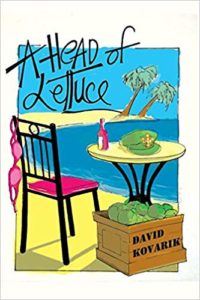 hosted by Virginia Tech; Also tour leader, panel chair, educational coordinator; Pittsburgh coal history tour leader, Oct. 2018; New Orleans day-long workshop leader, Sept. 2013, Chemicals in the environment; Lubbock Texas, October 2012, Reporting wind power tour, book publishing panels; Chattanooga, TN: October 2013, citizen science panel; New Orleans, La: chemical disaster workshop panel; many others. Also see Education for Environmental Journalism, SEJ web site.
hosted by Virginia Tech; Also tour leader, panel chair, educational coordinator; Pittsburgh coal history tour leader, Oct. 2018; New Orleans day-long workshop leader, Sept. 2013, Chemicals in the environment; Lubbock Texas, October 2012, Reporting wind power tour, book publishing panels; Chattanooga, TN: October 2013, citizen science panel; New Orleans, La: chemical disaster workshop panel; many others. Also see Education for Environmental Journalism, SEJ web site.
- Speaker for: First Amendment rally, Floyd Ec0-village, Feb. 2017; “Art, identity and media in Appalachia,” presentation to the Grayson County Land Care group, June 20, 2016;
History of Renewable Energy, Unity College, 2015; American Chemical Society conference, Pittsburgh PA, October, 2012 panel on the media and Rachel Carson; Elderstudy, “Radio Time Machine,” 2011. Many others. - Guest instructor, Hollins University Writers Conference: 2012, 2013, 2014, on technology and writing; 2016 on Writing in the Gothic South; 2019 on communications technology and community media; and 2025 Writing Ghost Stories.
- Book production for “Head of Lettuce,” “Blood on the Horns,” and other books. Cover Design and other production work for Glen Martin’s Global Democracy and Human Self-Transcendence: The Power of the Future for Planetary Transformation, Cambridge Scholars, 2018.
Interviews & Citations, 2001-2021
| “The oil industry was born with the silver spoon of subsidy firmly wedged between its little teeth. It was not born in the spirit of free competition that they like to tell you about all the time. So energy is really political, and it was always political from the very beginning…” — Prof. K, From Freedom Fuels, starring Daryl Hannah, Willie Nelson, John Stewart, Homer Simpson, Woody Harrelson and Prof. Kovarik. |
- American Poison, by Daniel Stone, Penguin / Random House, Feb. 2025.
- CNN, environmental history topic, Aug. 23, 2023.
- Publisher’s review, Turning Green, December 2022.
- The magic bullet, citation of work by Jamie Kitman, January 27, 2022.
- Leaded gasoline and the media: Interview with WYSO Dayton Ohio, Jan. 18, 2022.
- Heritage Radio Network, corn ethanol, April 2, 2021
- “Wearing the Lead Glasses” by Tom Beller, Places Journal, May, 2019.
- “Marking 50 years since the Cuyahoga River fire, which sparked US environmental action,” by Cheryl Hogue, Chemical & Engineering News, June 17, 2019.
- Research work consulted and cited in Richard Rhodes’ Energy: A Human History, Simon & Schuster, 2018.
- How a German city changed the way we read, BBC, Madhvi Ramani, May 8, 2018. Translated to Turkish, Vietnamese and other languages.
- WNYC podcast about history of magazines, June 2018.
- Forward to The Ethanol Papers by Marc Rouch, the Auto Channel, 2018.
- “Interested in Environmental Writing? Prof. Kovarik’s new class is for you,” The RU Tartan, Nov. 7, 2017.
- “Silicon Valley’s trust is on the line in Congressional hearings,” Globe and Mail, Toronto, Oct. 29, 2017
- “Environmental journalists learn about infamous smog incident,” Herald-Standard, Oct. 11, 2017.
- Fifty Things That Made the Modern Economy, BBC News, Jul 7, 2017.
- In Latin America, Journalists are an endangered species, Mongabay, Aug., 2017..
- “War against ethanol,” Automobile magazine, Sept. 26, 2016, by Jamie Kitman.
- Roy L. Nersesian, Energy Economics: Markets, History and Policy, Routledge, 2016.
- At Standing Rock – Water, History, and Finance Converge Circle of Blue WaterNews-Dec 1, 2016, Keith Schneider.
- Why are Brazil’s environmentalists being murdered? Washington Post-Aug 27, 2015.
- Forbes magazine
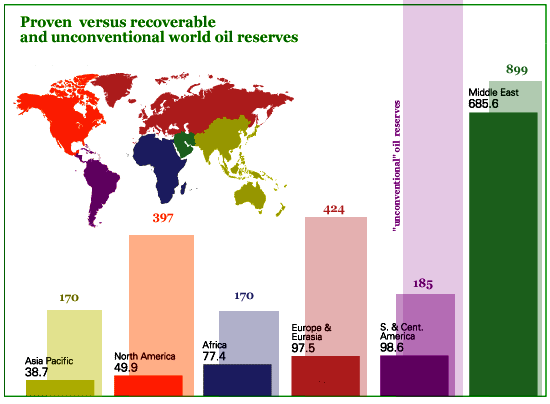 columnist James Conca publishes Prof. Kovarik’s world oil reserve comparisons July 22, 2015. For more see the “Oil reserve fallacy” and a more recent blog post “We should have known better” — both on this web site.
columnist James Conca publishes Prof. Kovarik’s world oil reserve comparisons July 22, 2015. For more see the “Oil reserve fallacy” and a more recent blog post “We should have known better” — both on this web site. - Power for the People interview with Steve Kahl, May 2015
- Chemical Heritage Summer 2014 article quotes Prof. Kovarik on the need for dialogue in science controversy.
- Environmentalists under fire by Scott Wallace, Smithsonian Magazine Feb. 2014. “We may be seeing just the tip of a much larger iceberg,” says Bill Kovarik, a communications professor at Radford University in Virginia who tracks cases of abuse perpetrated on green activists.
- Chemical Heritage: Duck and Cover- Science writing in the digital age, Jennifer Weeks, Summer 2014.
- Inside Charlottesville radio interview, March 2014
- Smithsonian: Blood in the Jungle Scott Wallace, February 2014.
- Now that publishing and circulation are free, Forbes Magazine, Benjy Boxer, Jan. 21, 2014.
- “The Perils and Promise of turning plants into gasoline,” April 10, 2013. The Tyee, Vancouver.
- “With Good Reason” Virginia Public Radio, Jan. 19, 2013. Also see the “Radio Time Machine” page which is part of the Revolutions in Communication book page.
- Glen Flannagan, “Students question censorship policies,” USA Today, May 8, 2013.
- Associated Press, May – June, 2012 “Killings of Environmentalists appear to be on the rise.”
- Bob Siegel, A brief history of biofuels, Triple Pundit, 2012.
- Pat Morrison program, KPCC radio Los Angeles July 3, 2012
- Discovery Channel, “Dark Matters,” radium girls, leaded gasoline, on camera interviews for TV show.Windmill Studios, Brooklyn, August 5, 2012.
- Daily Climate – Climate change hot list
- Daily Climate – Climate change reporting is down
- Louisville Courier Journal – Climate Coverage down from past years
- Columbia Journalism Review — The Observatory
- Climate Central – Climate coverage still down
- Inside Climate News – New York Times abandons environment unit
- Frederick N. Rasmussen, “Hezekiah Niles: a patriotic newsmagazine editor in 19th century,” Baltimore Sun, Sept. 4, 2011.
- Neil Young, Waging Heavy Peace, 2011, p. 22 – 23.
- Associated Press, “Leaded gasoline to be gone by 2013.”
- “Energy in, Energy out,” NPR, Harvest media, Dec. 20, 2010.
- National Public Radio interview, Dec. 21, 2010.
- Robert McClure,”Malaria, DDT, and eco-imerialism,” Investigate West.
- Where are the Steve Wozniaks of the Energy Revolution? True Slant, May 30, 2010 — Why it is that the social construction of energy technology is so much more difficult than the social construction of, say, computing and the digital media revolution? Was IBM that much less of a challenge than Standard Oil? Where are the Steve Wozniaks of the energy revolution?”
- Running on ‘E’ — Norfolk Virginian Pilot, Dec. 3, 2011 — “Ethanol isn’t new. … Henry Ford built the Model T with an “adjustable carburetor” to run on gas or ethanol, Kovarik said…
- Ethanol gets a boost — National Public Radio, Dec. 21, 2010 — Ethanol may seem modern, but people throughout Appalachia have been making it for hundreds of years. “We are known for our moonshine industry,” says science writer Bill Kovarik with a laugh, “very well known for our moonshine industry. It is still flourishing.” Kovarik, who’s also a professor at Radford University, says that ethanol is, first and foremost, a way to make corn more valuable. More than a century ago, Henry Ford built cars to run on it, with just that in mind. “So, you could replace the transportation income that farmers used to have by [their] growing the fuel for the cars, instead of growing horses and feed.” Prohibition killed that idea, but the farm crisis, oil shocks and environmental concerns have revived it. Lawmakers gave companies a tax credit — currently 45 cents a gallon, more than $5 billion a year — for blending ethanol with gasoline.
- United Nations: Leaded gasoline to be eliminated — Associated Press, worldwide, Oct. 27, 2011 — Leaded gasoline became universal despite warnings from public health advocates and a scandal over the deaths in 1924 of six refinery workers in Newark, New Jersey, who were poisoned while manufacturing it and “were led away in straitjackets,” said Bill Kovarik, professor at Radford University who researched the history of leaded gasoline.“Historically, there are only a handful of major environmental victories like this,” Kovarik said. “It took 90 years to eradicate what was always a well-known poison from a product that everyone uses. It’s a great achievement, but it really says something about how public health works globally, that it took so long … Benjamin Franklin complained about lead poisoning in print shops.”
- Laura Graefe, “Peak Oil Debate,” Atlanta Federal Reserve, Economic Review, Nov. 9, 2009.
- National Public Radio interview with Dr. Kovarik about biofuels Feb 15, 2007
- Late Lessons, Early Warnings,Express TV (Denmark) – Award winning 2004 documentary has interview with Dr. Kovarik
- With Good Reason, interview, April 7, 2001.

